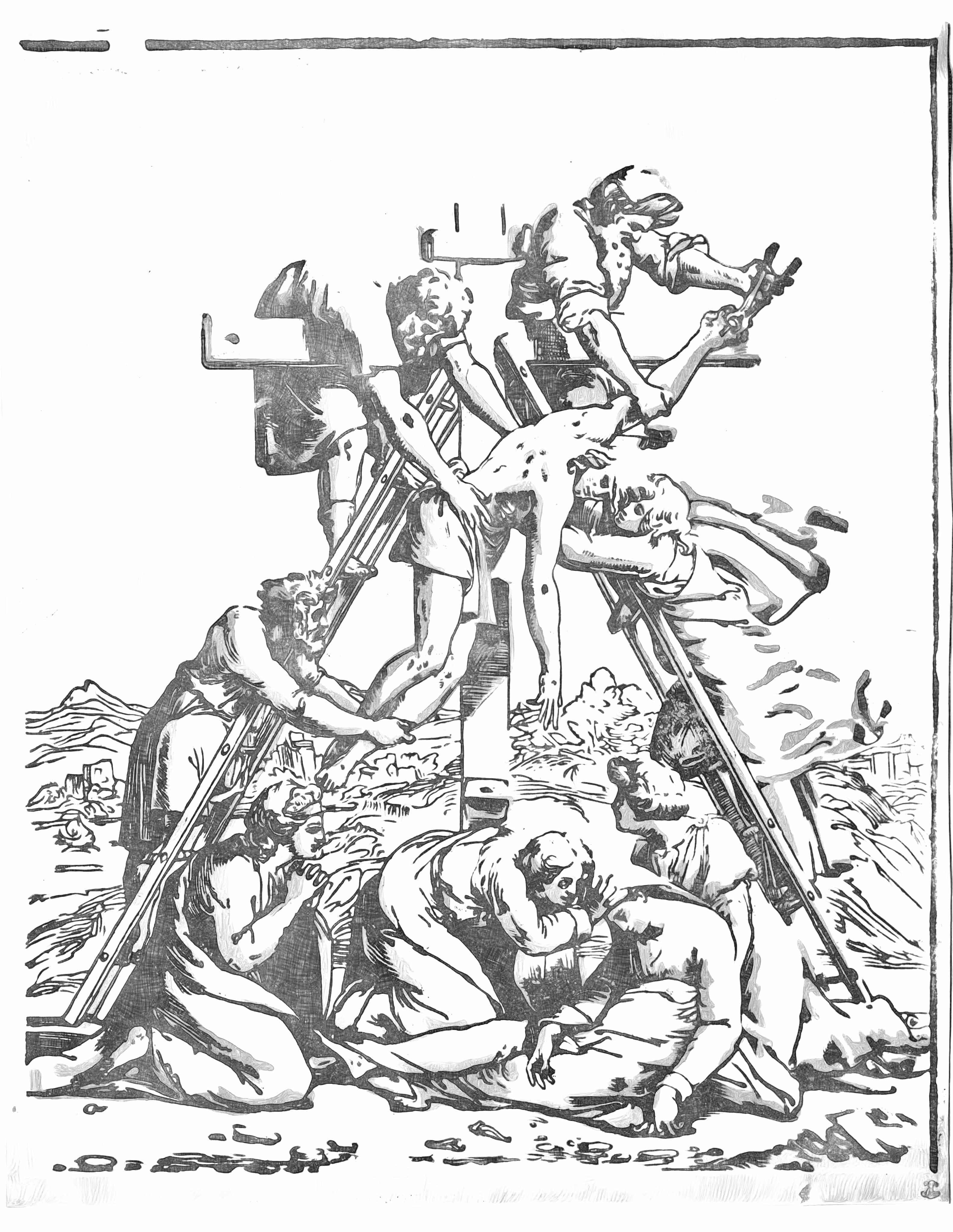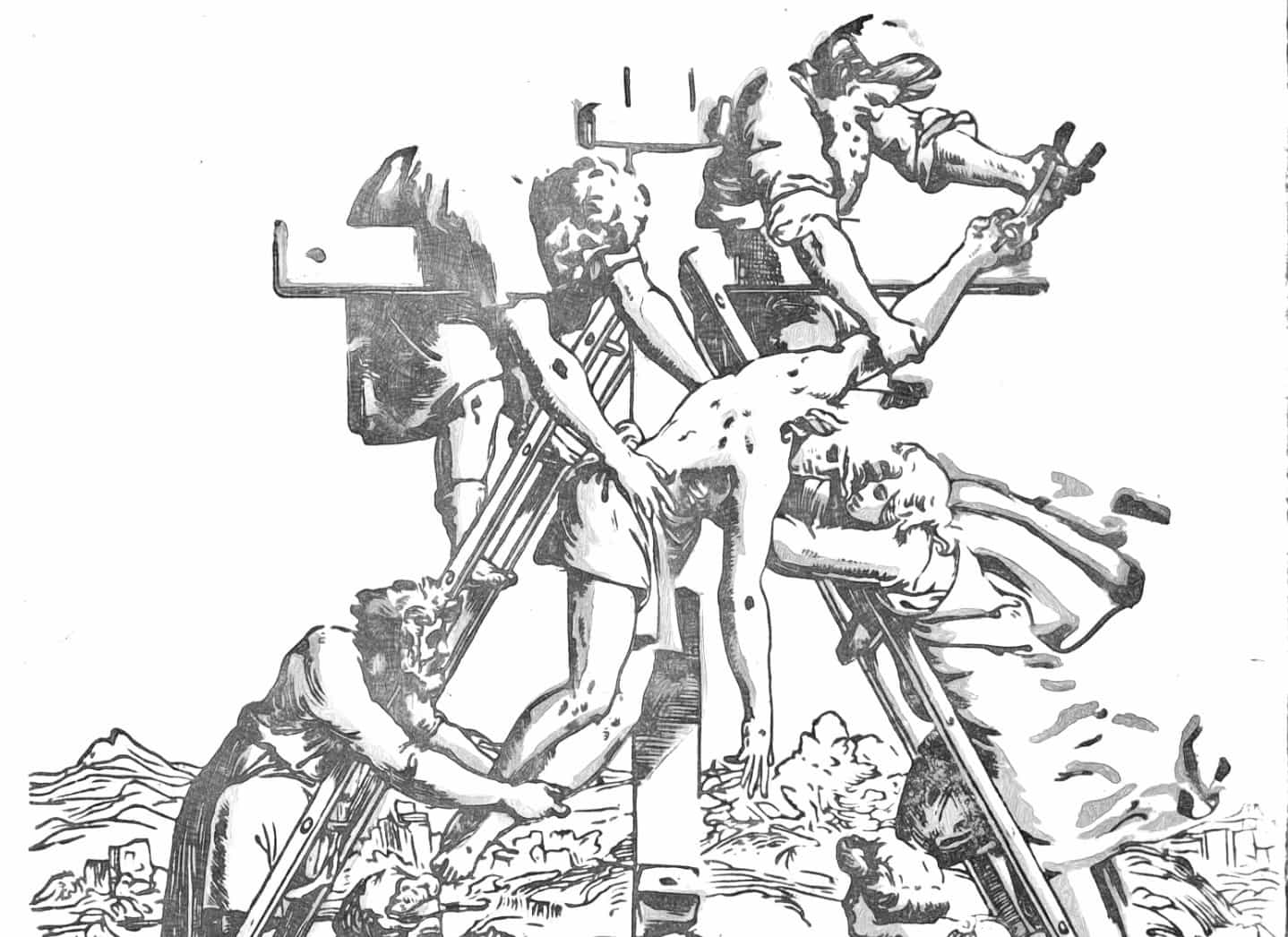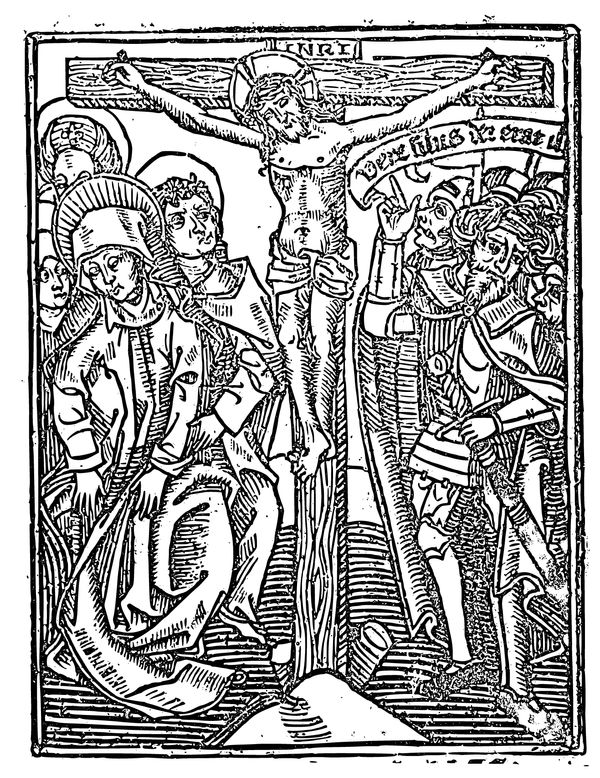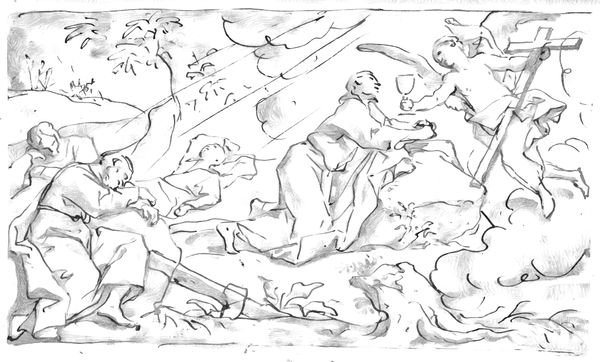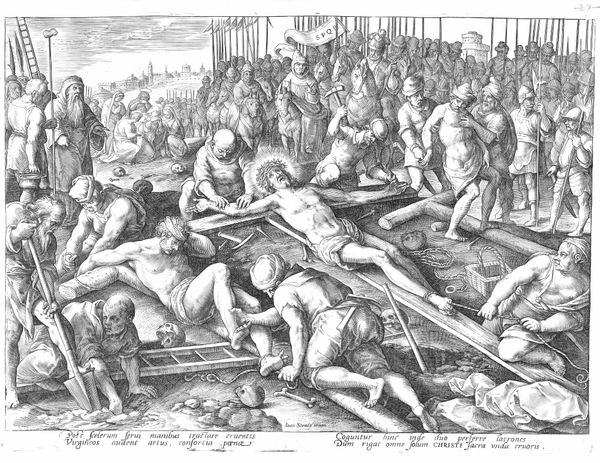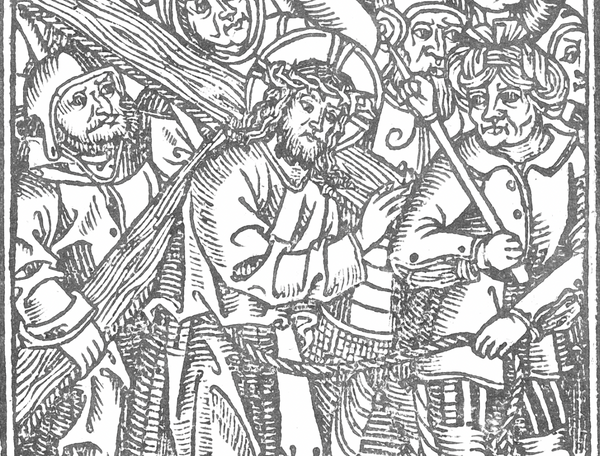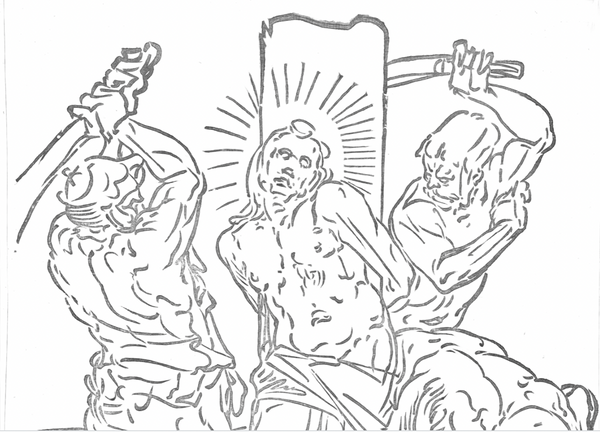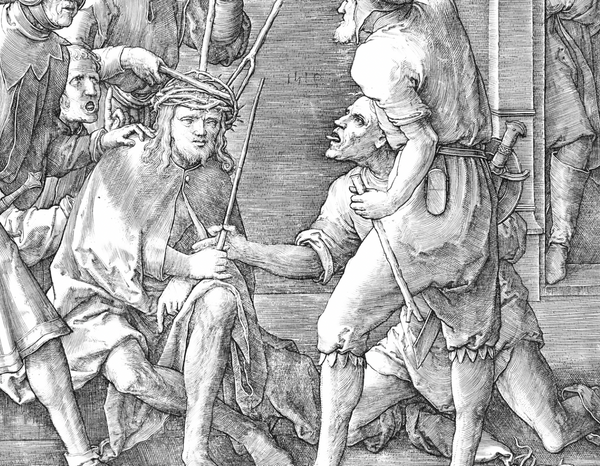Details:
Ugo da Carpi was influential in the development of the chiaroscuro woodcut in Italy. The term chiaroscuro combines the Italian words chiaro (light) and scuro (dark). Invented to emulate drawings with light and dark pigments on tinted paper, the printing technique uses multiple woodblocks to layer different tones of color.
The Descent from the Cross is one of the earliest chiaroscuro woodcuts by Ugo da Carpi. This print credits Raphael with its design: it was inspired by one of Raphael's now-lost drawings for a scene of Deposition that he should have painted in Loggie Vaticane. In a sketch-like hilly landscape, Christ's dead body is taken down from the cross by four men, one of whom is removing the nail from his right palm. Below, the three Marys attend the fainted Virgin. For this woodcut, Ugo used three different blocks—light brown, dark brown, and black.
Did you know?
This three-block chiaroscuro woodcut is known in two states. These differ for a small detail: the inscription with Raphael's name in the lower margin of the frame, and Ugo's name inscribed in the light tone block inside the small board at lower right, as seen in the CMA example.
